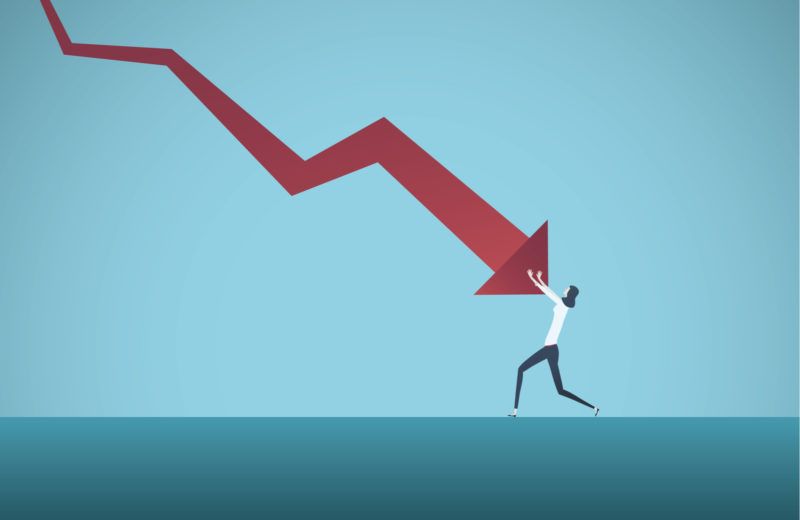The Coronavirus Recession: What Can the China Experience Tell Us?

California is locking down and shops and factories nationwide are being shuttered. Just three weeks ago, some 150 novel coronavirus cases were documented and things on Main Street seemed fine. By March 19, the number documented exceeded 11,000, GM and Ford were closing plants, the nation’s schools were shut down, and prominent sporting events were wiped out along with all other major-crowd generating activity.
There is an unsettling amount of economic uncertainty out there right now. There may also be a rough template emerging from China as to what we might expect on a national scale.
Though the U.S. cases reported are fewer than in China, the U.S. epidemic profile may be taking on the same inverted bowl shape of its Chinese counterpart. It rises, reaches a peak and recedes. Of course, the shape’s length and profile are determined by what we do to offset and contain the virus.
But by considering the frequency and shape of China’s coronavirus experience and relating that to the country’s economic performance, we may be able to link epidemic severity to GDP growth. We may thereby identify roughly how the U.S. economy will perform as our epidemic expands (and eventually contracts).
China had just a handful of cases in mid-January. The count of confirmed new cases hit 1,000 around January 30 and peaked at close to 5,500 during the first week of February. By February 18 the count of new cases was down to less than1,000 and headed south. By March 1, just 60 days after the first few cases were documented, the new case count was approaching zero. On March 19, China reported there were no new cases for the first time since the outbreak started. At that point, the number of cases still under treatment stood at roughly 35,000.
China’s Virus-Affected GDP Growth
While the accuracy of the Chinese data may be suspect, we likely still know more about the frequency of new Chinese coronavirus cases than we do about the performance of the Chinese economy during the same time period. As with the United States, data on China’s GDP, industrial production, and retail sales arrive with a lag. We are flying in the dark. We have fragments of information, some estimates made by outsiders, and some pure speculation about what is going on. So, let’s see what we can do with this fragmented information.
Consider this: On March 18, Deutsche Bank estimated that China’s first-quarter GDP growth would be a whopping -31.7 percent; this was a sharp revision from the bank’s earlier, pre-coronavirus, estimate of -5.9 percent. Things get worse. The estimate for China’s second quarter is -34.0 percent. The bank’s fourth quarter estimate is far better at 4.5 percent positive growth.
In other words, from Deutsche Bank’s perspective, China’s coronavirus-affected GDP growth will look a lot like that same bowl, only right-side up. It’s the reverse image of the coronavirus growth path itself. Growth falls precipitously, bottoms out for a while, and recovers.
Deutsche Bank is not alone. On March 15, Bloomberg reported that China’s GDP growth for January and February would register -20.0 percent and that retail sales and investment fell by the same amount. Yahoo reported that industrial output in January and February had fallen 15.7 percent on a year-over-year basis. For comparison purposes, China’s GDP growth averaged roughly 6.0 percent in 2018, 2017, and 2016.
Applying the Chinese Data to the US Experience
The U.S. and Chinese economies are dramatically different social beings, but one may still gain some useful insight by applying China’s ongoing GDP growth experience to the United States. To some extent, these differences are already “baked in” to the data.
Recall that the Chinese coronavirus experience started in early January and fell to a low level of activity in mid-March. During that ten-week period, a vast part of the Chinese population experienced the type of home confinement that we are now voluntarily (and not-so-voluntarily) experiencing. Major cities and industrial operations were closed. Then, with the coronavirus threat nearing containment, the affected cities and industries were opened again and the deeply disrupted and seriously bruised economy began a difficult reknitting process.
The U.S. coronavirus contagion began in February, is accelerating in mid-March, and is just now being confronted with major city, state, and industry closings. If we experience a 10-week long economic disturbance like China’s, then we will see sharply negative GDP growth effects for part of February, all of March, part of April and maybe longer.
How does this fit with what forecasters are saying for the U.S. economy?
Accordingly, Deutsche Bank is now calling for barely positive 0.6 percent GDP growth for 2020’s first quarter, bearing in mind that we had no contagion here in January. Its forecast turns negative for the second quarter, with -12.9 percent growth expected. JP Morgan expects to see -14.0 percent growth in this year’s second quarter. Turning to the end of the year, Deutsche Bank expects to see -1.0 percent growth in the fourth quarter.
In a few words, Deutsche Bank sees a U.S. profile that looks much like that of China, but one that starts later and runs longer. Perhaps this has to do with the gentler approach being taken in the United States to confine the population.
According to this analysis, we are moving into recession territory right now, and the negative effects and seriously difficult times will continue until the end of 2020. In spite of it all and as of this writing, GDP growth for the year is still expected by some to be positive—although by less than 2.0 percent. Bank of America recently forecasted 1.7 percent GDP growth for the year and Wells Fargo called for 1.4 percent.
I remind the reader that any negative GDP growth predictions like the ones described here are large and will be painful; they are larger than those experienced during the 2008 Great Recession, and that was a rough one.
Final Thoughts
Of course, the exact path of the U.S. economy across 2020 is unknowable. We can only make estimates and speculate. The very best we can do is look at experiences elsewhere for guidance; consider the flow of new forecasts that reflect the latest data, and try to remember that what really matters is how we manage our personal GDP growth.
After all, it is critically important that people who may do something to alter the situation—our elected and appointed officials—have good estimates on how the economy is performing and reacting to shocks that hit it.
But for most of us ordinary Americans, the economy that matters is our economy—our family, our neighborhood, where we work, and how our investments may be doing. No matter what happens to GDP growth, it’s up to each one of us to adjust to the circumstances we each face and to do our dead level best to keep our own economy floating.












